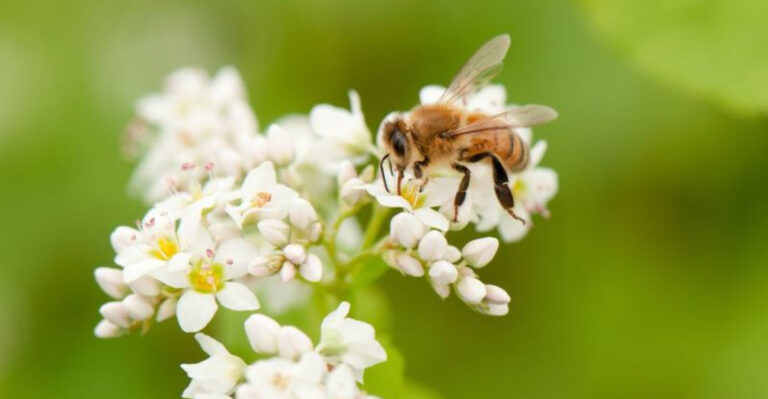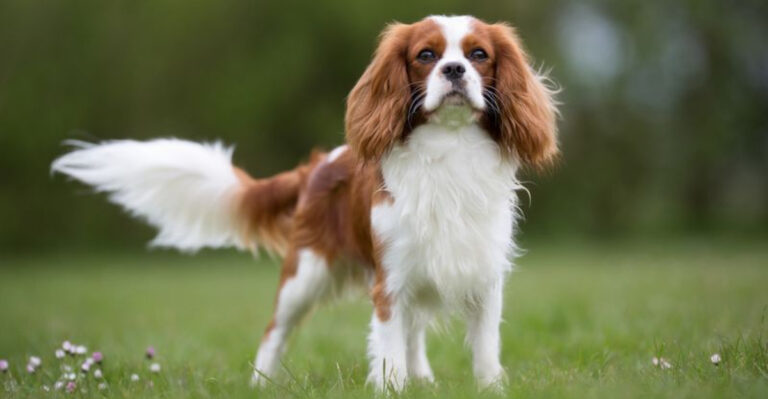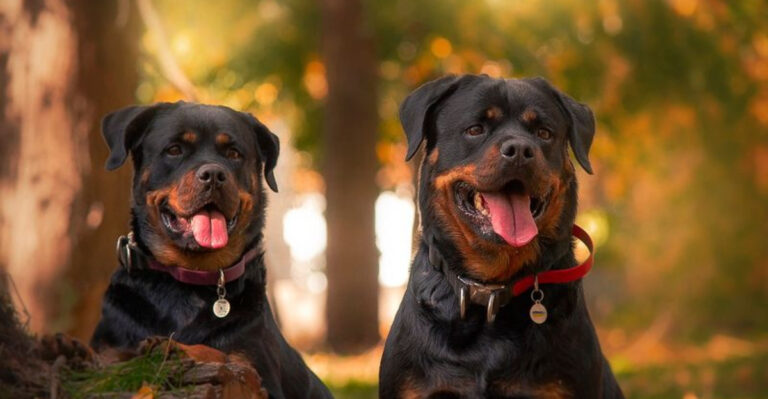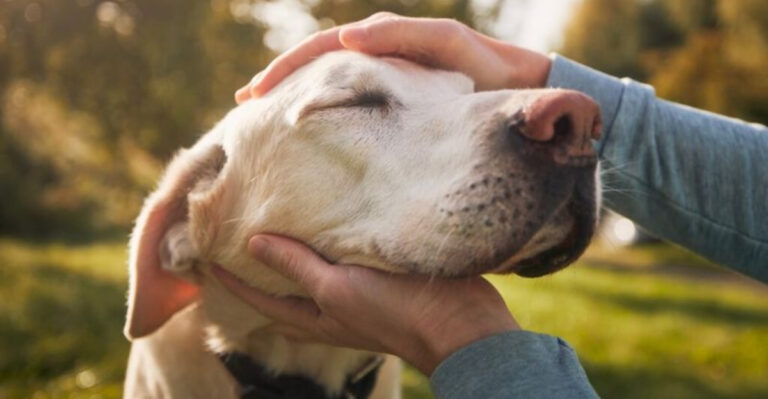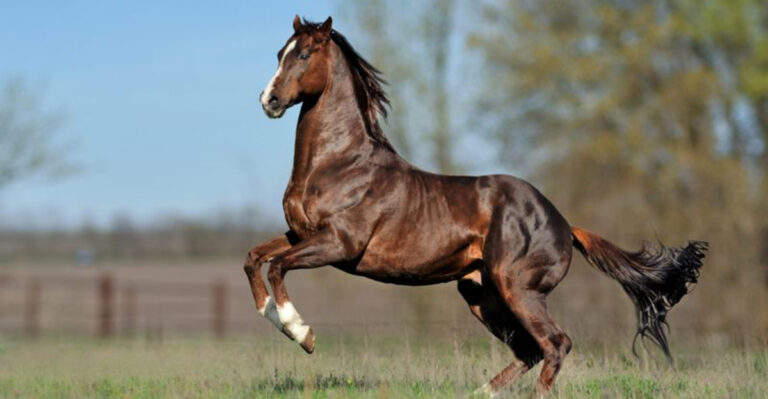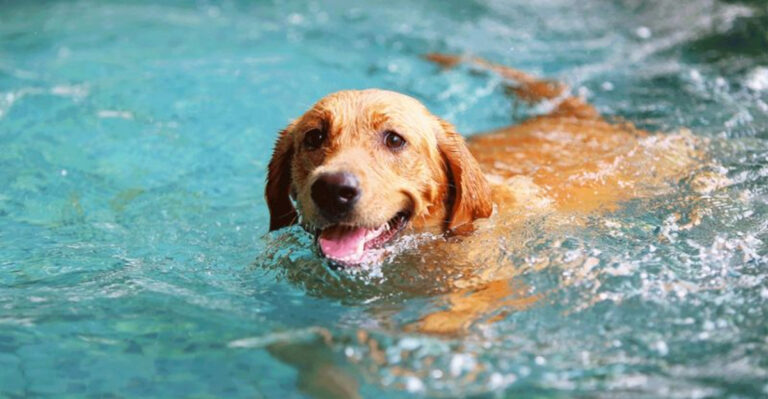14 Surprising Dog Breeds Who Can’t Swim Very Well
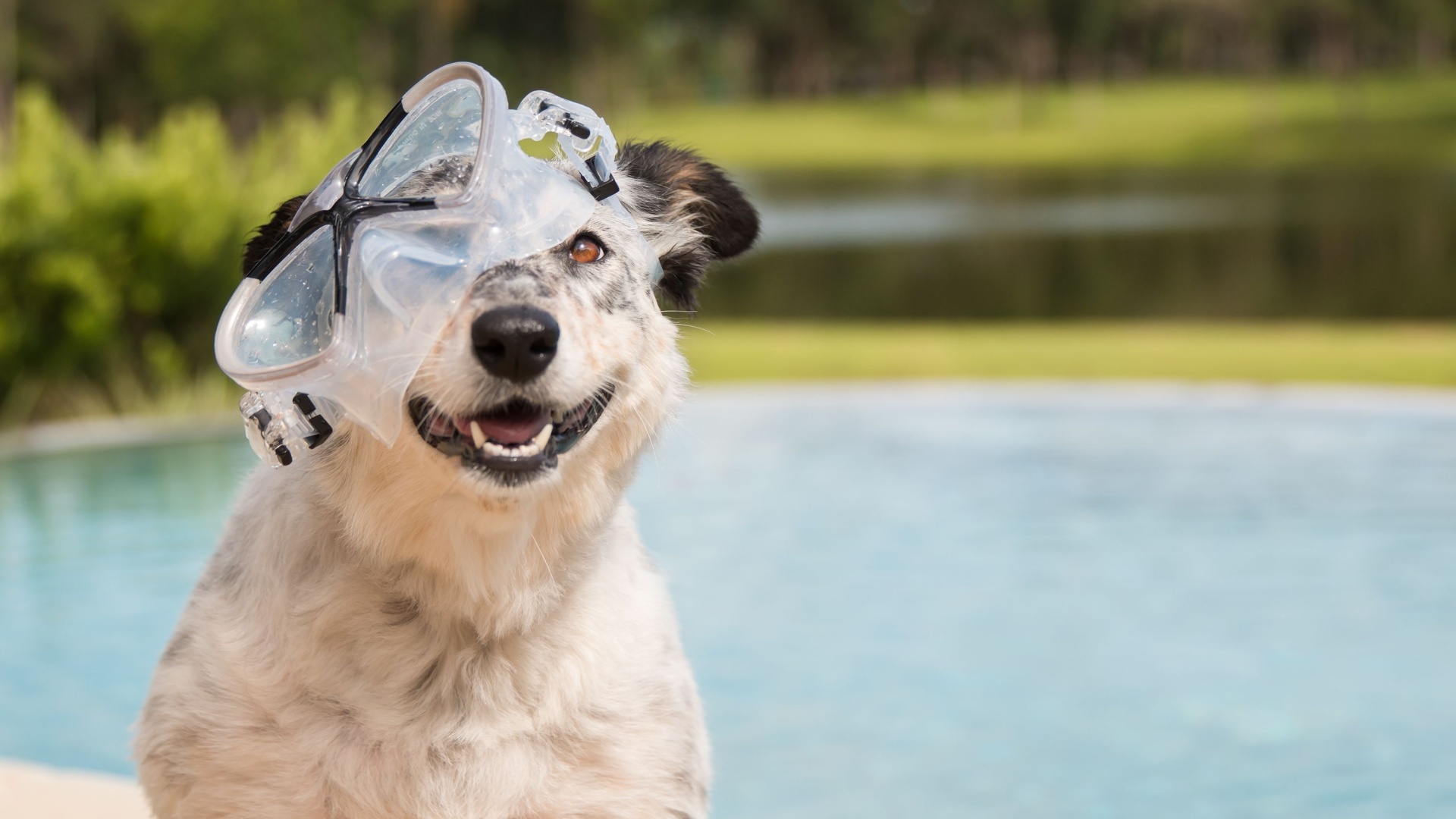
While many of us assume all dogs love water, some breeds are naturally not built for swimming. This can be due to body structure, coat type, or other unique characteristics. Here, we explore dog breeds that typically struggle in the water and why it might be best to keep them on dry land.
1. Bulldog
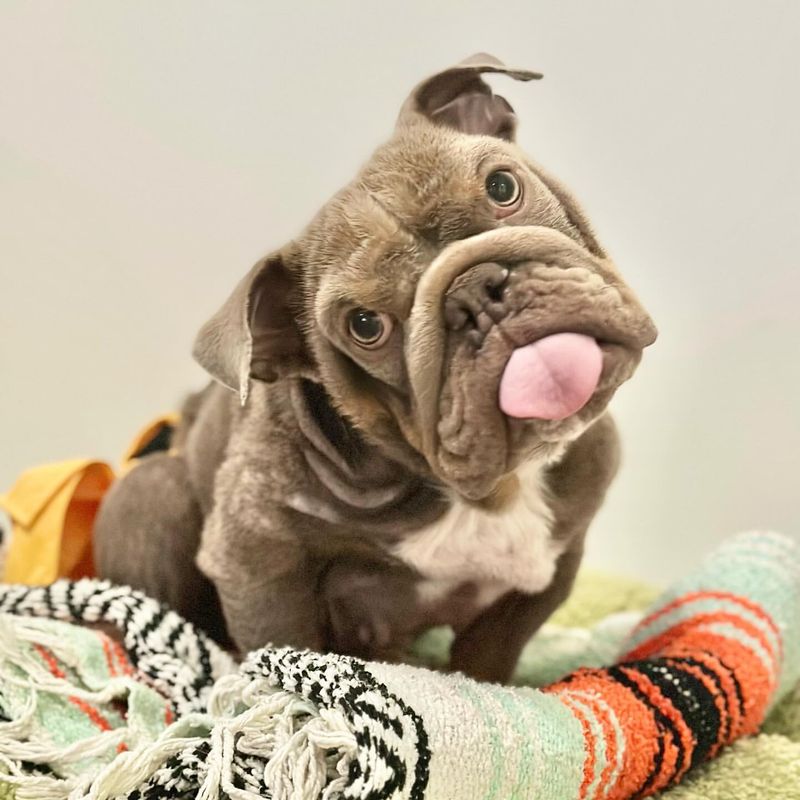
Swimming pool? What’s that?! Bulldogs are known for their adorable wrinkly faces and sturdy, muscular bodies; however, these very features can make swimming a challenge. Their dense bodies and short legs make it difficult for them to stay afloat.
With their flat faces, they can struggle to keep their noses above water to breathe properly. Despite their limitations in aquatic activities, Bulldogs are incredible companions on land. They prefer lounging and a good cuddle over an adventurous swim.
If you own a Bulldog, providing them with a life jacket is essential if they’re near water. Always supervise them closely during any water-related activities. Bulldogs may not be natural swimmers, but with the right precautions, they can safely enjoy the occasional splash.
2. Basset Hound

The Basset Hound, with its long body and short legs, is not made for swimming. Their dense bones make them prone to sinking, and their lengthy ears can get in the way, creating drag in the water. Basset Hounds are much more suited to leisurely strolls and sniffing adventures.
Their keen sense of smell is their superpower, not their swimming ability. If you’re considering taking your Basset Hound near water, always equip them with a life vest and stay by their side.
While they may not be winning any doggy paddle races, they will certainly win your heart with their loyal and gentle nature.
3. Dachshund
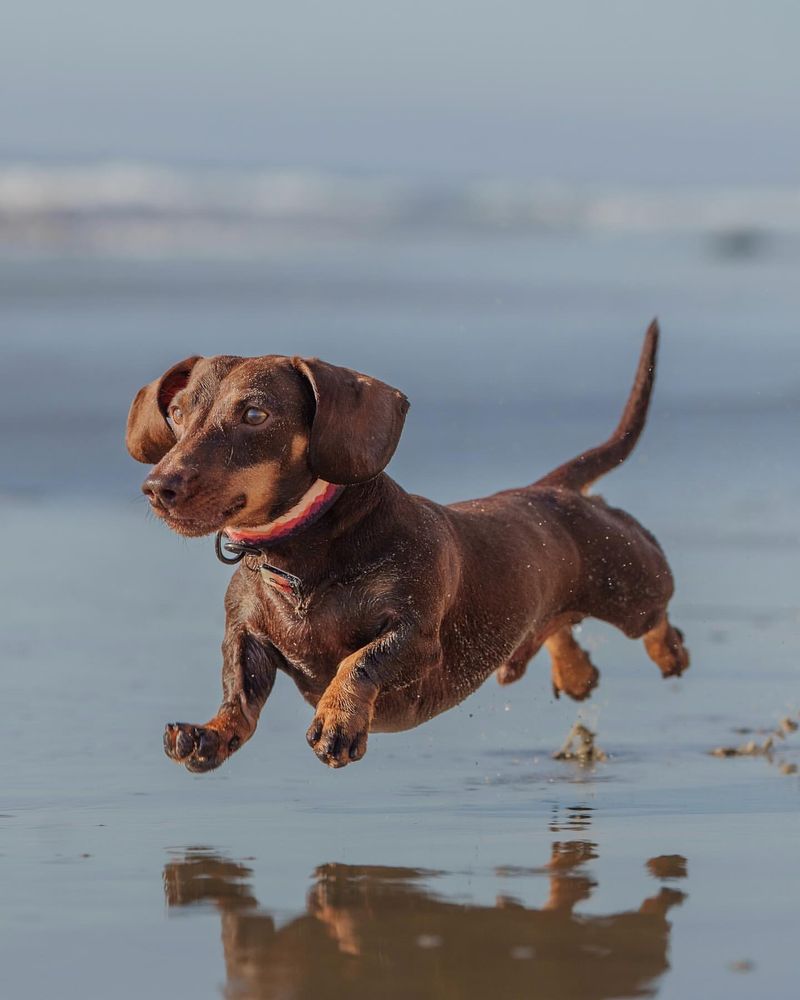
Dachshunds, affectionately known as “wiener dogs,” have a unique body shape that doesn’t lend itself well to swimming. Their long torsos and short legs mean they have to work extra hard to stay afloat. These charming little dogs are better suited to running around on land, exploring and playing.
If you do want your Dachshund to join in on water fun, make sure they are wearing a life jacket to help them stay buoyant. Remember, Dachshunds are diggers at heart, not swimmers, so keeping them safe and comfortable is key while near water.
4. Pug

With their distinctive flat faces and compact bodies, Pugs aren’t naturally built for swimming. Their breathing can be compromised when water gets too high, and their short legs make paddling strenuous.
Pugs are playful and curious, often eager to join in family activities, but it’s crucial to keep water safety in mind. A well-fitted life jacket can give them the confidence and support they need if you want them to experience the water.
Supervision is a must, as Pugs may not be aware of their own swimming limitations. On land, these delightful dogs are loving companions who bring joy to any household.
5. Boxer
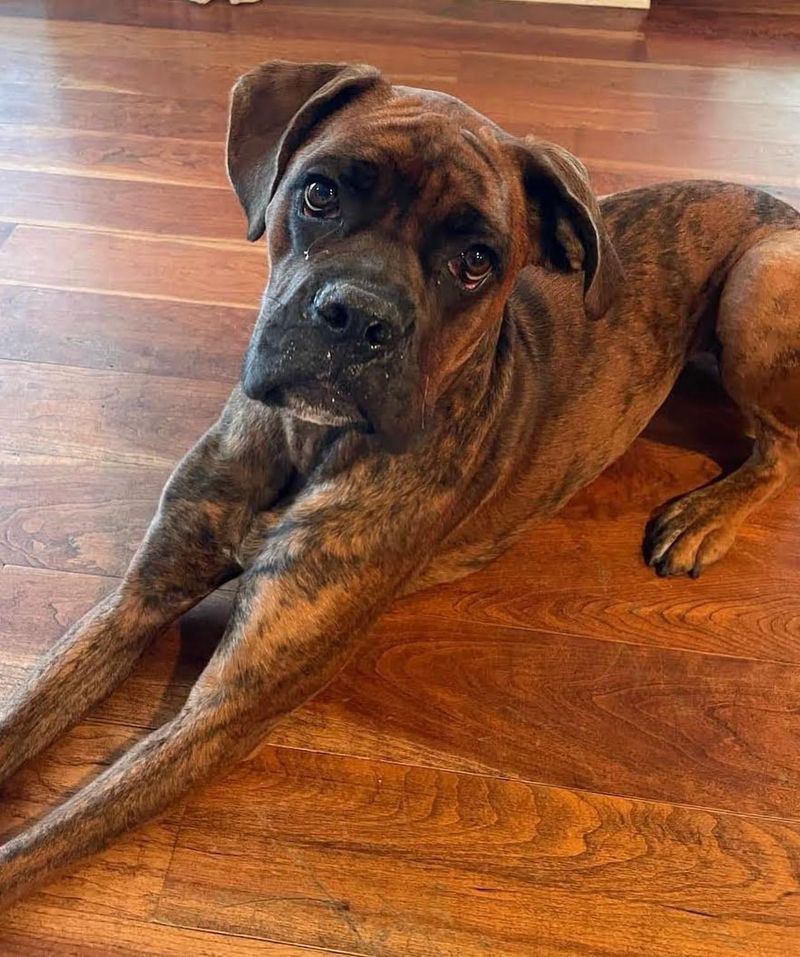
Boxers are energetic and athletic, though swimming isn’t always their forte. Their muscular build can make it challenging to stay buoyant, and they can tire quickly in the water. While some Boxers may take to water with proper training and equipment, others are content staying on dry land.
If your Boxer shows interest in swimming, a life jacket can provide essential support. Whether playing fetch in a yard or relaxing indoors, Boxers are devoted family dogs who thrive on activity and affection.
6. Shih Tzu
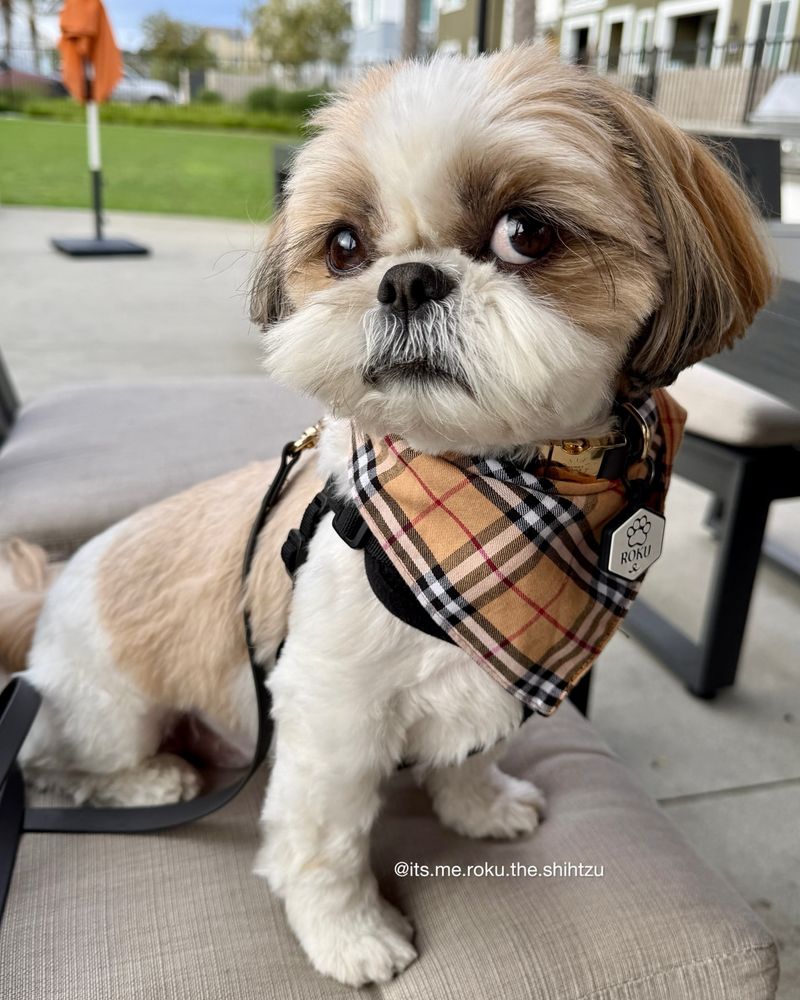
Shih Tzus, with their luxurious coats and short muzzles, are not natural swimmers. Water can easily weigh down their long fur, and their breathing can be restricted if they become submerged. These elegant dogs are better off enjoying the view from the shore rather than joining in the swim.
If they must be near water, ensure they have a life jacket and constant supervision. Shih Tzus bring charm and companionship to their owners, thriving in environments where they can stay dry and comfortable.
7. Chihuahua

Chihuahuas, with their tiny frames, are not typically fond of water. They can get cold easily and may struggle to stay afloat due to their small size. While they may not be swimming stars, Chihuahuas excel in providing warmth and companionship.
If you plan to introduce your Chihuahua to water, a life vest is an absolute must to ensure their safety. Keep the experience positive and gentle, allowing them to decide how much they want to interact with water. On land, these little dynamos are full of life and energy.
8. Maltese
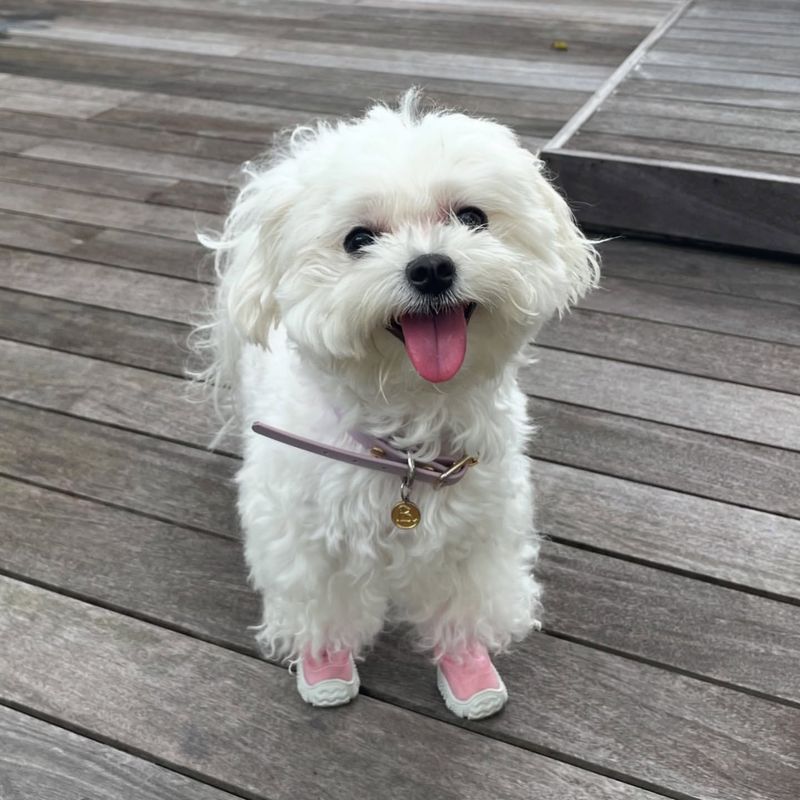
The Maltese, with its beautiful long coat, is not ideally suited for swimming. Their fur can become heavy when wet, and their small stature makes it hard to stay afloat. These dogs prefer the comfort of dry land, often enjoying gentle play and companionship.
If they are near water, a snug life jacket and close supervision are necessary to keep them safe. Maltese dogs are all about elegance and charm, making them delightful companions, especially when kept dry and happy.
9. Corgi
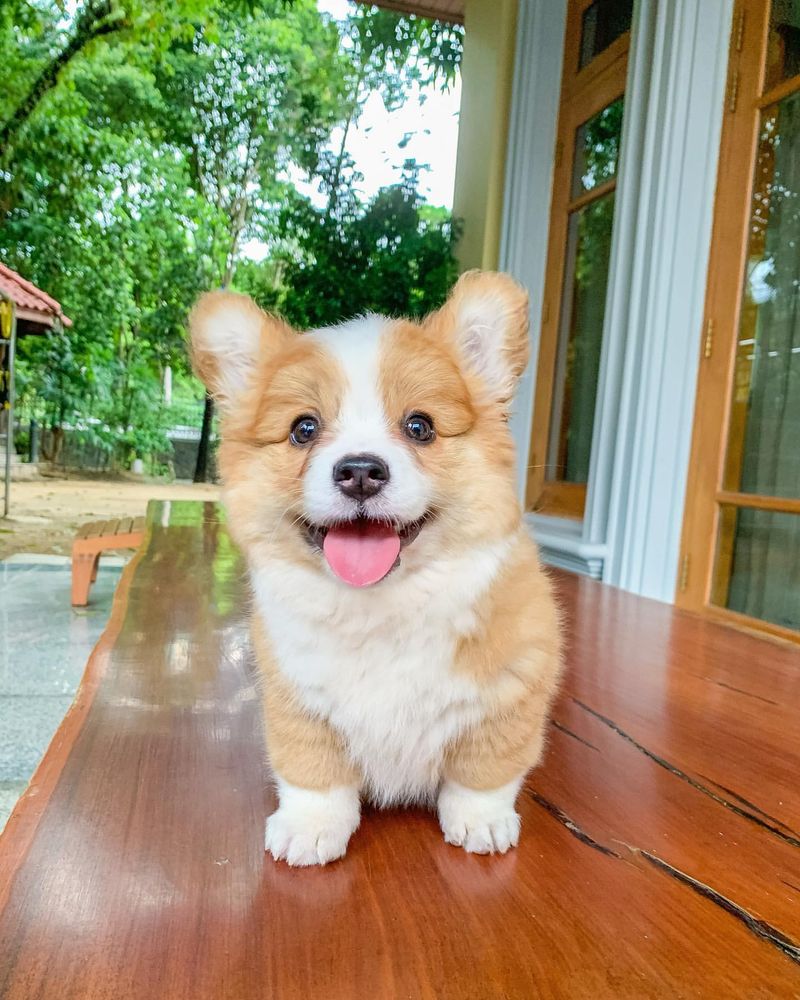
Corgis, with their stout bodies and short legs, aren’t built for extensive swimming. Their dense build makes it challenging to stay buoyant and navigate through water. Despite these challenges, Corgis are enthusiastic and playful, often enjoying a quick splash with the right safety gear.
A life jacket is essential if you want your Corgi to join in water fun. On land, these herding dogs are energetic and affectionate, providing loyal companionship to their families.
10. Pekingese
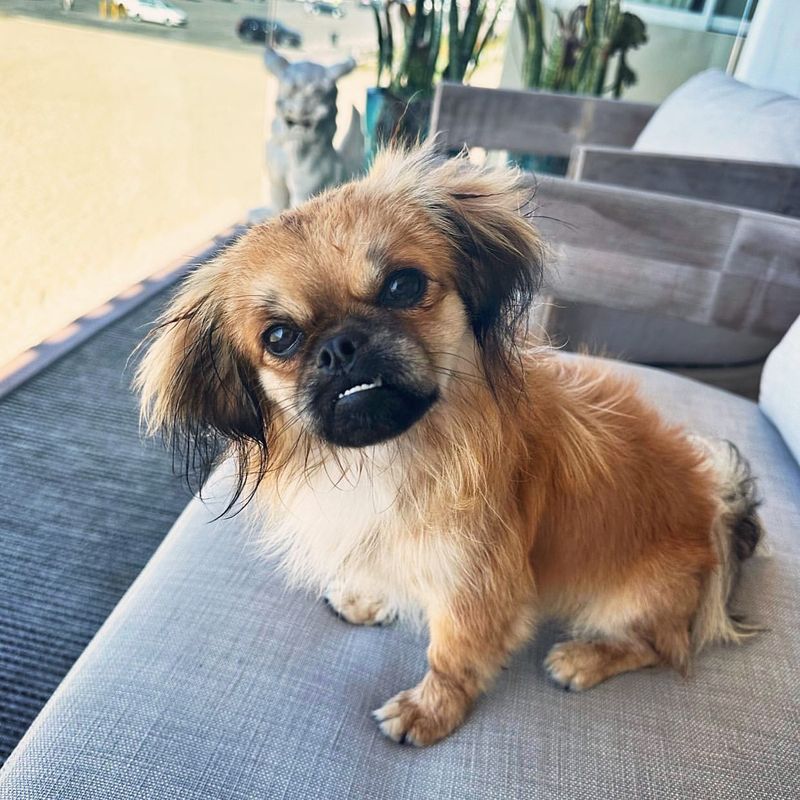
The Pekingese, with its regal appearance and dense coat, struggles with swimming. Their fur can absorb water quickly, making them heavy and uncomfortable in the water. These dignified dogs prefer staying dry, enjoying leisurely strolls and the comfort of home.
If they must be near water, a life jacket and careful supervision are mandatory. Pekingese dogs are content with their feet on solid ground, where they can showcase their charming personalities and delightful companionship.
11. French Bulldog

French Bulldogs share many of the same swimming challenges as their English Bulldog cousins. Their short legs and compact build make swimming difficult, while their flat faces can hinder breathing when submerged.
Despite their limitations in the water, French Bulldogs are playful and affectionate, often following their owners with loyalty and love.
Providing a life jacket is crucial if they are to be near water, ensuring they remain safe and secure. On land, these dogs are full of character, ready to charm with their unique personalities.
12. Yorkshire Terrier
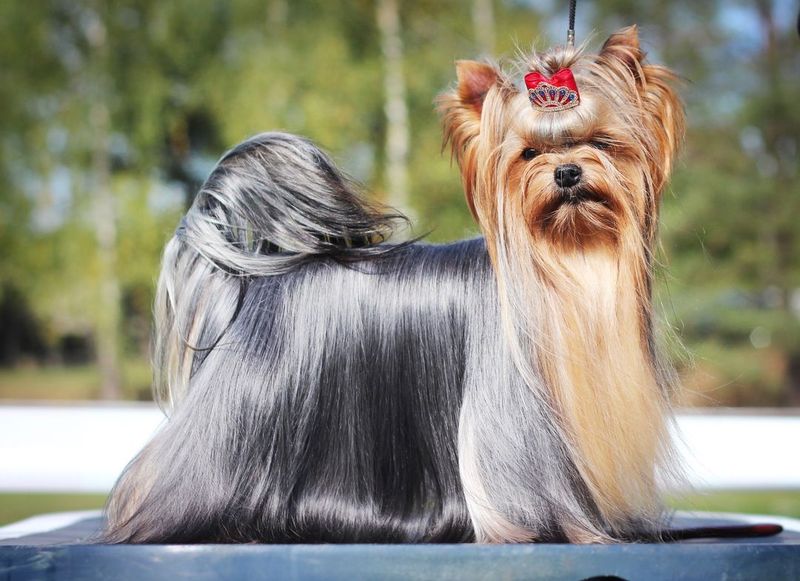
With hair like this, I wouldn’t go swimming either!
Yorkshire Terriers, with their fine, silky fur, aren’t naturally inclined to swim. Their small size and lightweight frame make it tricky to keep afloat without tiring. These elegant dogs excel in companionship and playful antics rather than aquatic adventures.
If a Yorkie needs to be near water, ensure they wear a life jacket and are closely supervised. Yorkshire Terriers thrive on land, where they can enjoy their playful personalities and the comfort of a loving home.
13. Pomeranian

The Pomeranian, with its abundant fur and small frame, isn’t designed for swimming. Their thick coats can become waterlogged, and their size makes staying afloat a challenge.
Pomeranians are lively and alert, often enjoying dry land activities over water play. If they are near water, a life jacket is crucial to ensure their safety and comfort. These spirited dogs bring joy and excitement to their families, thriving in environments where they can stay dry and active.
14. Scottish Terrier
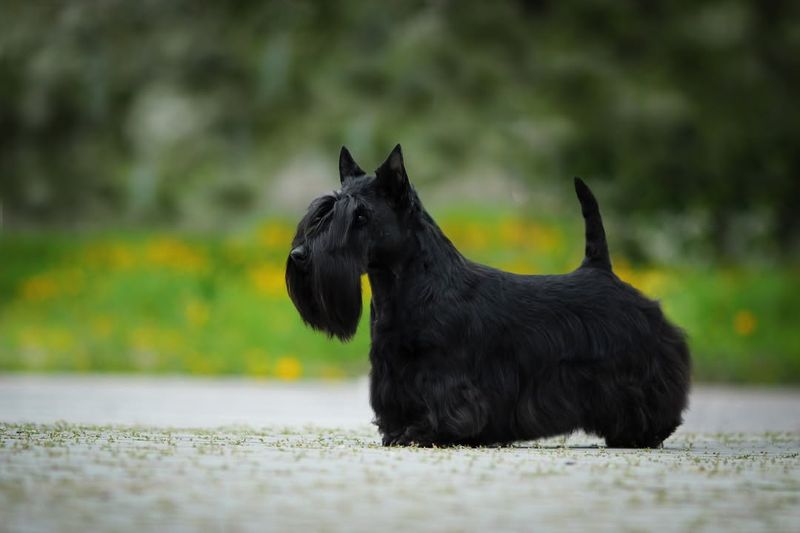
Scottish Terriers, or Scotties, have dense, heavy bones that make swimming challenging. Their short legs and sturdy build do not lend themselves well to aquatic adventures. These independent dogs are better suited to exploring dry land, where they can dig and play freely.
If they’re near water, providing a life jacket is essential for their safety. Scotties are full of character, thriving on land with their spirited personalities and loyal companionship.

